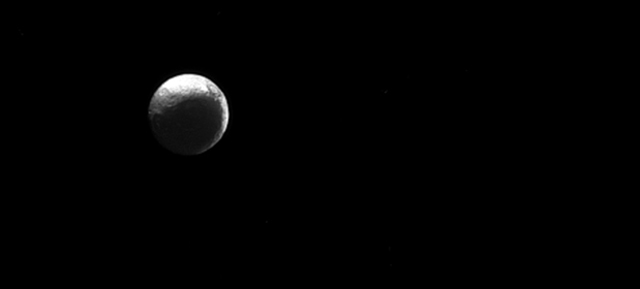Saturn’s moon Iapetus has both a light side and a dark side — but it’s nothing to do with sunlight. In fact, this moon takes on two distinct colours.
Scientists actually believe that the moon’s dark-light asymmetry is a result of material migrating across the the moon due to variations in temperature. Over time, subtle darkening leads to changing heat absorption — darker areas absorb more heat, lighter areas less — resulting in differences in ice evaporation. In turn, the evaporation produces higher concentrations of dark material, and so the effect becomes even more noticeable. You can read more about the phenomenon, known as the Thermal Runway Model, here. This image of the 914-mile diameter moon was captured by the Cassini spacecraft’s narrow-angle camera on January 4, 2015.
Picture: NASA
